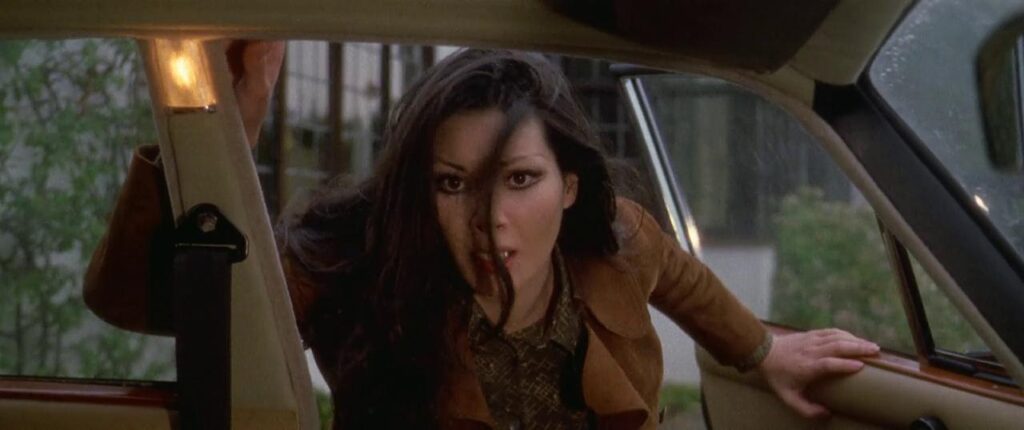
Sergio Martino’s classic Tutti i colori del buio (1972) is a highly expressionistic thriller marked by psychedelic flourishes that combines the psycho-drama of Alfred Hitchcock’s Marnie (1964) with the Gothic trappings of Mario Bava’s early features. Released in english speaking territories as All The Colors Of The Dark, Tutti i colori del buio became one of the quintessential giallo films of the seventies and a classic thriller. Martino’s combination of frantic camera moves and cuts coupled with highly stylized effects (slow motion, replay, and kaleidoscope images) have often been imitated but rarely equalled.
The iconic Edwige Fenech plays Jane Harrison; a woman whose childhood traumas have resurfaced after a miscarriage. Her boyfriend Richard (George Hilton) is skeptical of Jane’s therapy with Dr. Burton (George Rigaud) which prompts Jane’s sister Barbara (Susan Scott) to enlist the services of a black magic coven. For a while Jane’s visions of a mysterious killer subside as a result of the black magic orgies, but it isn’t long before Jane begins to realize that her nightmares have been real all along.
Like Marnie, Tutti i colori del buio finds its terrors and thrills in a woman’s sanity on the brink. But unlike Hitchcock’s masterpiece Tutti i colori del buio focuses much more on the subjective reality of its heroine. Martino’s stylized cinematography and editing positions the audience to be as unsure of the narrative as Jane is of her reality. To do this Martino borrows freely from Nicolas Roeg’s Performance (1970) to create physical spaces that are always in flux.
Oddly enough the most visually arresting moment in Tutti i colori del buio comes just after the opening credits. In a dream sequence Martino introduces the modus operandi for the entire film as well as introducing the supernatural themes and the protagonist Jane. This dream sequence is theatrical and kinetic. Set on a black soundstage, grotesque figures lurch about in a pantomime of Jane’s traumas. It’s a sequence that combines the energetic formalism of Kenneth Anger with the stylization of Federico Fellini.
In connecting the horror motifs of the satanic cult sub-genre with that of the traditional giallo Martino suggests that the fantasy of the slasher is merely in service of a larger, communal terror. This notion is at once deconstructive of the genre mechanics as it is reflective of the political reality of our society. The mystery killer in Tutti i colori del buio is but a cog in the cult’s machine just as the fantasies of death and killing that the slasher represents are necessities for the existence of institutionalized religion.
Unlike many similarly themed films of the seventies the motives of the antagonists in Tutti i colori del buio are neither mystical nor sexual but rather economical. Martino still exploits the mystic and sexual images of the genre of course, but once Jane realizes the true purpose behind the cult Martino shifts the aesthetic gears from horror to crime thriller. Even though Martino adjusts the style of the film for the final reel, Tutti i colori del buio never betrays its macabre atmosphere.
